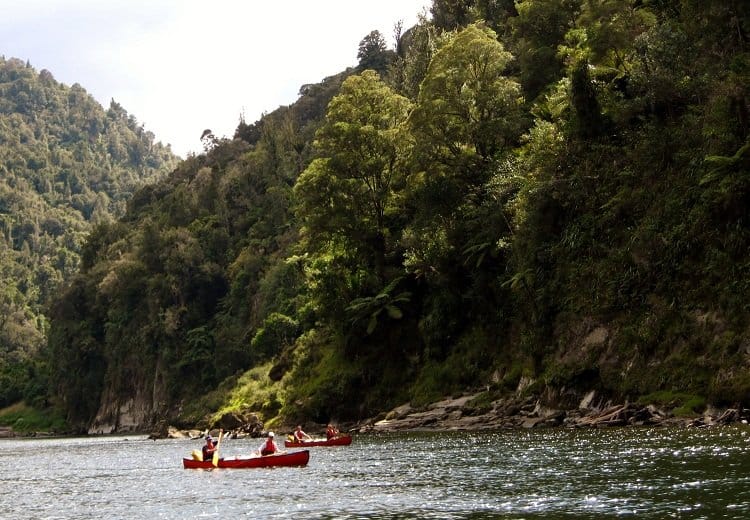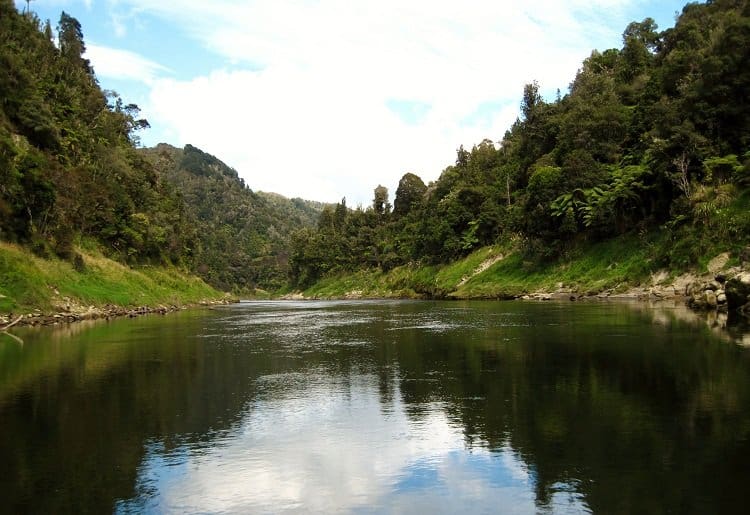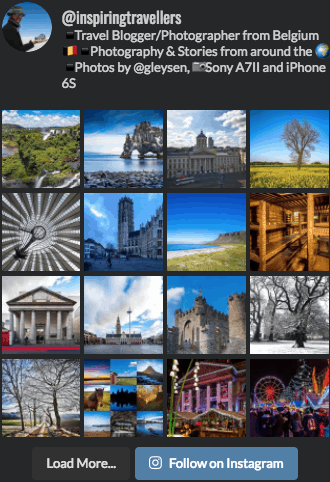When we first discussed our travel in the North Island of New Zealand, our original plan was to spend three or four days canoeing down the Whanganui River. Although John agreed at first, he later determined that this was probably a bit more athletic than we’d like to be. We also had to consider how much gear we would have with us. So we planned four nights in nearby National Park Village instead, which turned out to be a better choice. The location allowed us to complete the Tongariro Alpine Crossing (which was spectacular) and also a day trip along the Whanganui River.
The Whanganui National Park is an important natural and historic area for the North Island, containing its largest tract of native bush. The area contains the access routes of early Maori and European settlers and explorers, including the mighty Whanganui River. Today, several of these routes have been cleared for visitors to experience tramping, jet boating, kayaking and canoeing. This is an area that we’ve been told few Kiwis venture to, a surprising piece of information given its natural beauty and peaceful remoteness.
Sprightly Ken from Whanganui River Adventures picked us up at 8:30am. We arrived in Pipiriki almost two hours later and, after being offered some complimentary hot drinks, were suited up with life jackets and ushered down to two waiting jet boats on the river. Our group consisted of us, two other couples and a gaggle of older Kiwi teachers clad in matching yellow t-shirts. We took off in the jet boats and zipped along the river at 60km/h, stopping from time to time to hear stories and explanations of its features. Ken has lived on the river his entire life and runs Whanganui River Adventures with his wife, Josephine whose family has also lived there for generations. He had extensive knowledge of the area and was the perfect guide.
In just under an hour we reached the track to the “Bridge to Nowhere.” It was a gentle 40 minute walk to the bridge, which is made of concrete and was built in 1936 for farmers in the area to access their land. These were mostly returning veterans of World War I who settled in the Mangapurua and Kaiwhakauka Valleys as part of a government initiative to transform the forest into farmland. The Great Depression and lack of trade access caused a mass exodus and the farmers that stayed were eventually forced to leave.
On the way back, Ken stopped 10km before Pipiriki to allow us and the couples to hop into canoes as part of our tour. We were to paddle ourselves back for a couple of hours. The river is in a gorge so the banks towered over us as we situated ourselves and our gear into the canoes. After a quick demonstration and some helpful tips, we were on our way. As it was our first time in a canoe, we were grateful for the calm conditions with only a gentle cross-wind to contend with.

We were clearly not prepared to participate in the multi-day canoe trips that are popular along the river.
All was going well until we paddled over some shallow water and all three canoes got stuck in the rocks. After some frenetic pushing and heaving we were free. We paddled on, enjoying the tranquil surroundings and warm sun. Only the sound of birds and the occasional jet boat broke the silence. It wasn’t until we were excited by the sight of some rapids ahead that things got interesting. Andrea suggested that we have some fun and go for it. So we paddled straight into the churning water as fast as we could, going hell for leather.
The first couple of bumps were fun, the splashes of water refreshing us. Then one wave crashed into the canoe, saturating Andrea (in the front of the canoe) and filling it with some water. There was no time to recover when the next wave completely flooded the canoe.
“Keep paddling,” shouted John. But the damage was done. The canoe was turned sideways and then began to lean to the left. It was time to jump ship, so to speak.
“Flip it over,” Andrea exclaimed. As we did this, we each had to hold on with one hand, with the other hand clinging to our oars and water bottles. John had the additional problem of keeping hold of his floating jacket that he’d removed halfway through the journey. Careering down the river, this easy adventure became a mission.
“Andrea, I’m gone! I’m gone!” While succeeding in clutching his jacket, John could no longer hold on to the canoe. Andrea looked up to see John floating downstream. As he gathered speed away from Andrea, panic set in. The bank we were closest to didn’t have an easy access point to stop, but the other side was covered in rocks that we had to get to fast. John swam frantically towards the bank, trying to reach a point where his feet could touch the ground. Andrea, holding the canoe with one hand, also swam to shore before John was able to help her drag it onto the rocks. At the same time, the other two couples paddled by in their canoes, asking us if we needed any help. The only casualty was one water bottle, which we asked them to retrieve further down the river. We were very lucky that the water was an inviting 21°C.
The canoe was now turned upright and flooded again, so we struggled to flip it over to empty out the water. After a very short break, we gathered our composure, jumped in the canoe and got going again. We could see the other canoes in the distance; no doubt they learned from our mistakes. We encountered some smaller rapids further downstream and managed them well enough, however, we had some narrow escapes where the water was shallow and the rocks barely missed the bottom of the canoe.
As we joined the others at the finishing point, we had to laugh at our little misadventure. It turned out to be the highlight of the day. Sometimes as a couple you have moments where you must work together to stay afloat (literally). This was one of those times and we were proud to get through it with no major consequences.
Editors note: The missing bottle was retrieved and the Whanganui River environment was unharmed during the making of this story.



